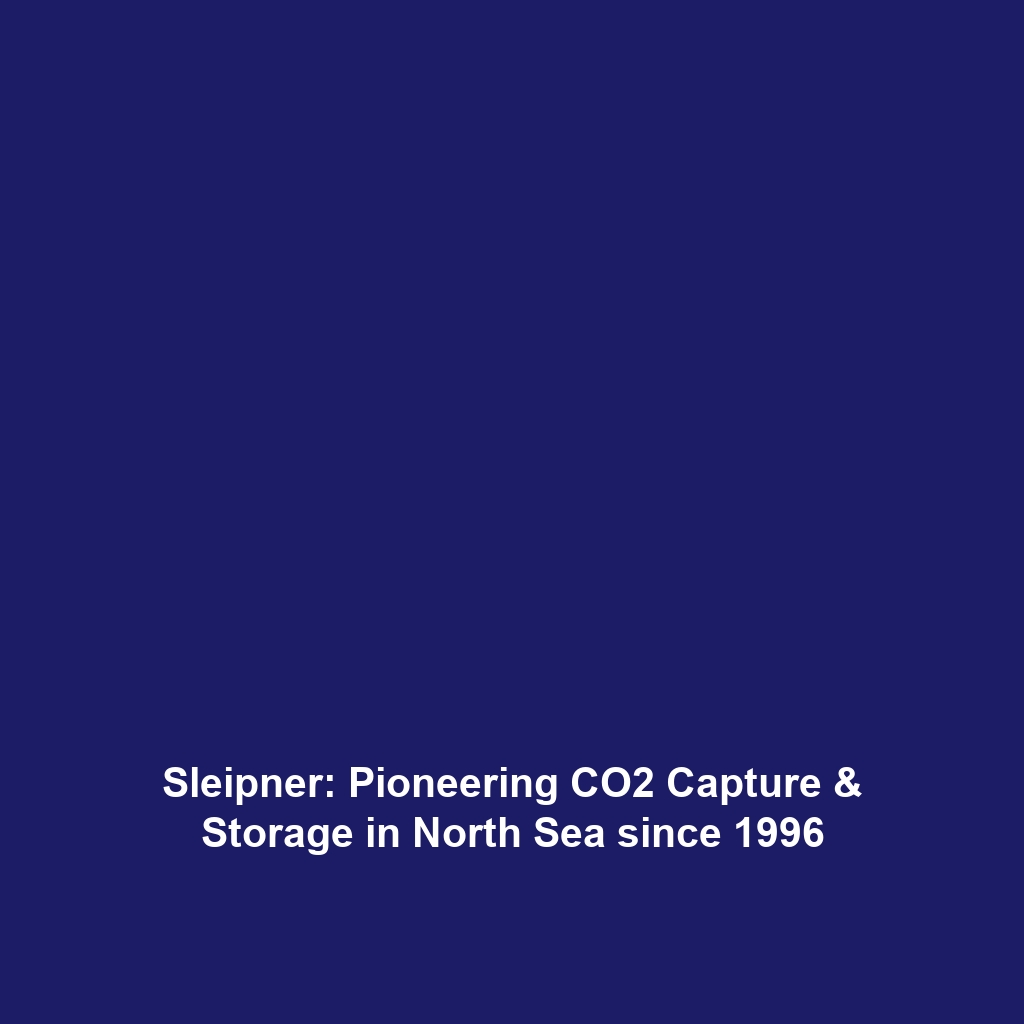<>
Ship-Based Transport for Long-Distance CO2 Transport in CCS
Introduction
Ship-based transport plays a crucial role in the long-distance transportation of carbon dioxide (CO2), mirroring the established practices within the liquefied natural gas (LNG) industry. This method of transport is gaining traction as a vital component of Carbon Capture and Storage (CCS) strategies. With growing concerns about climate change, efficient and scalable CO2 transport solutions are essential. Ship-based transport not only provides an avenue for offloading captured emissions but also integrates seamlessly with existing infrastructure, enhancing the feasibility of large-scale CCS projects globally.
Key Concepts
Understanding ship-based transport’s role in CCS involves several key concepts:
CO2 Liquefaction
To successfully transport CO2 over long distances, it’s first liquefied under high pressure. This process reduces the volume of the gas dramatically, making it more economical to transport, much like LNG.
Infrastructure Compatibility
The existing infrastructure for LNG can often be adapted for CO2 transport, allowing for more efficient integration with current supply chains and reducing the need for substantial new investments.
Environmental Significance
Transporting captured CO2 via ships can help mitigate climate change by enabling the safe and reliable movement of greenhouse gases from emission sources to storage sites.
Applications and Real-World Uses
The applications of ship-based transport in the CCS industry are diverse and impactful, including:
- Industrial Emissions Management: Companies capture CO2 emissions from industrial processes and transport them via ship to designated storage sites.
- Power Generation Facilities: Power plants utilizing carbon capture technology send their captured CO2 to offshore storage, ensuring lower emissions.
- Research Projects: Various pilot studies actively test ship-based transport of CO2, helping refine technologies for wider application.
Current Challenges
Despite its potential, ship-based transport faces several challenges:
- Regulatory Hurdles: The lack of standardized regulations for CO2 transport can complicate projects.
- Infrastructure Costs: Initial investments to adapt ports and build specialized vessels can be prohibitively expensive.
- Public Perception: Community concerns regarding the safety and environmental impact of transporting CO2 can hinder project development.
Future Research and Innovations
Ongoing research is focused on improving ship-based transport technologies and methodologies:
- Advanced Shipping Technologies: Innovations in ship designs specifically tailored for CO2 transport are being explored.
- Improved Liquefaction Techniques: Researchers are developing more efficient CO2 liquefaction technologies to reduce energy consumption.
- Carbon Utilization Strategies: Investigating potential uses for transported CO2 can create additional economic incentives for CCS initiatives.
Conclusion
Ship-based transport is a pivotal element of long-distance CO2 transport, directly supporting the broader goals of Carbon Capture and Storage (CCS). As industry experts and governments seek sustainable solutions to climate change, the agility and efficiency of ship-based transport will become increasingly important. Further research and development in this area is essential for overcoming existing challenges and enhancing the effectiveness of carbon management strategies. For more insights, explore our articles on CCS Applications and Innovative Technologies in CCS.

